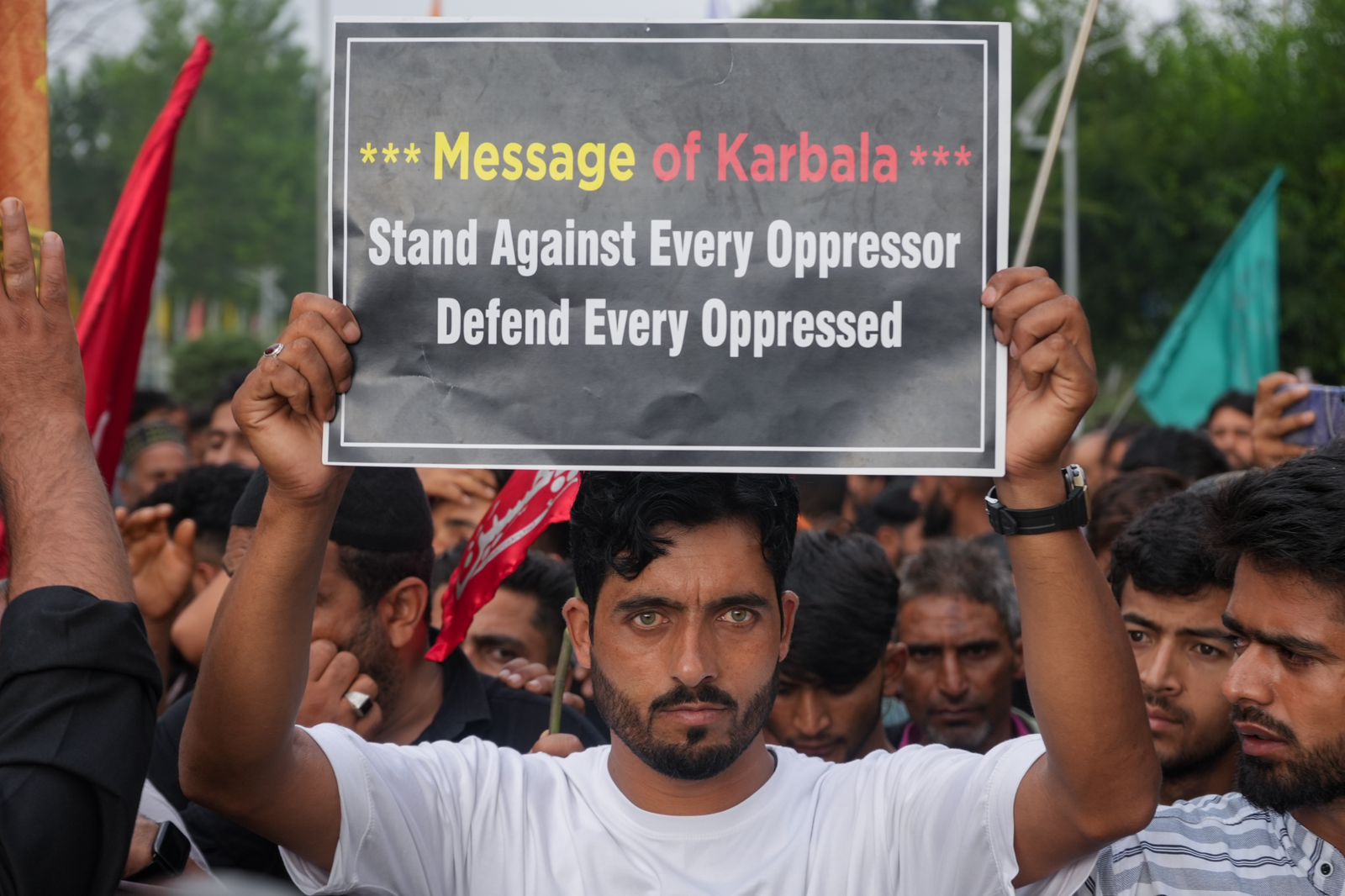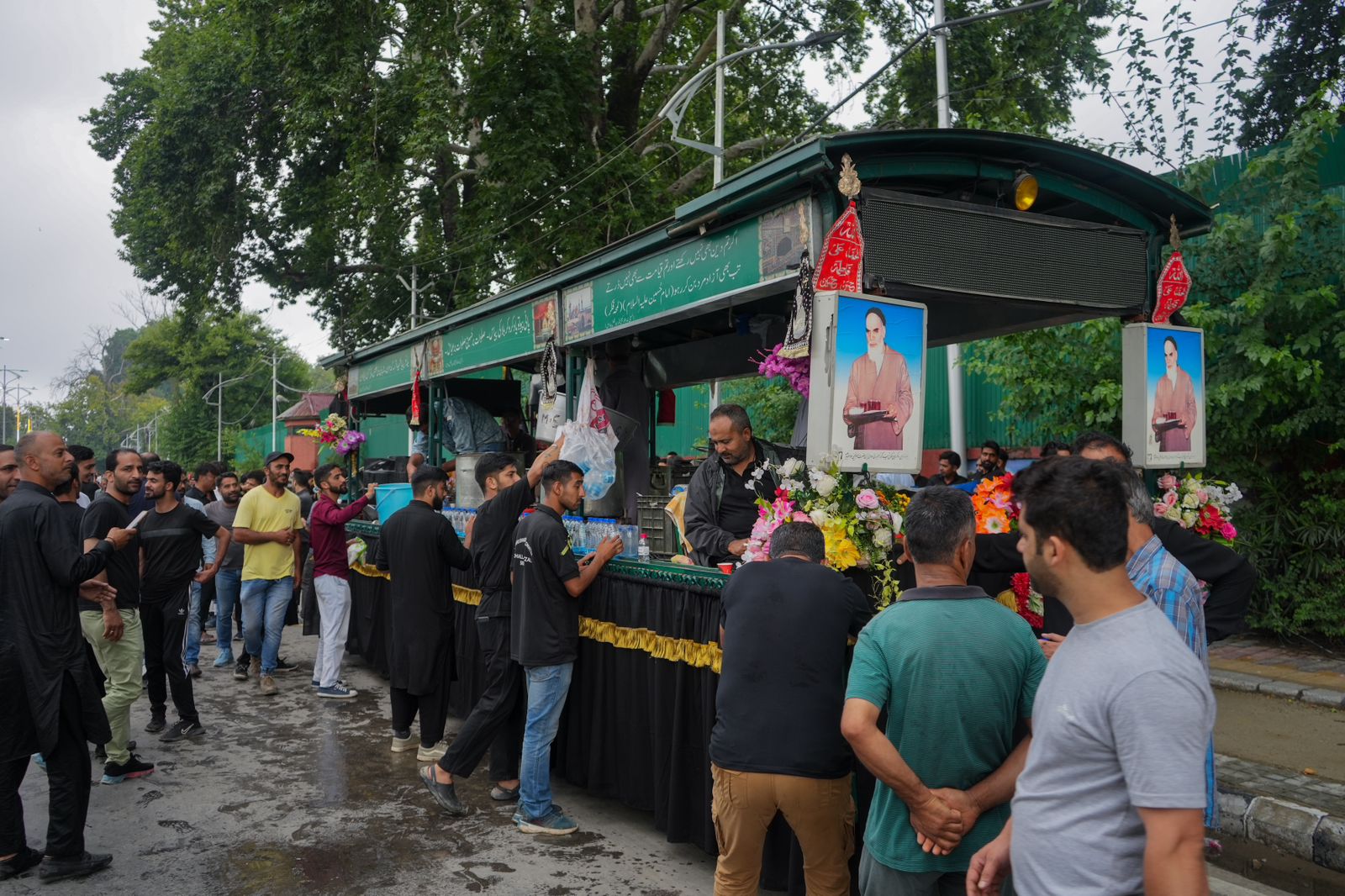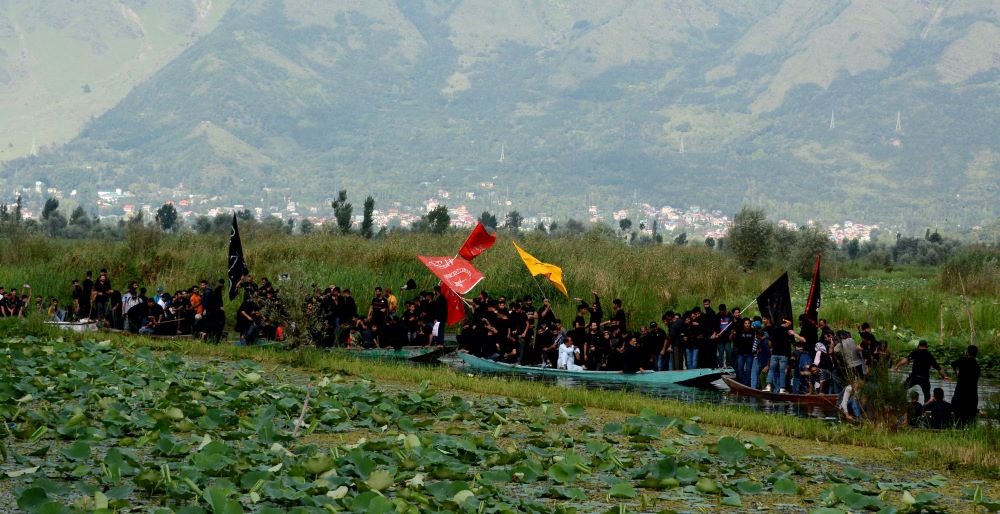by Zubair Hameed
SRINAGAR: As the gleaming Sun of last Islamic month Dhul Hijjah dips below in the Kashmir valley on its last evening, the devoted Shia Muslim community somberly waits to get the first glance of Muharram Moon, which marks the beginning of new Islamic calendar and a time that reflects the martyrdom of Hazrat Hussain ibn Ali (R.A), the grandson of Prophet of Islam.

As the sun rises over the majestic mountains on the first day of Muharram, the ambiance is full of anticipation and wholehearted. Men, women and children dressed in traditional black attire start gathering at local mosques and Imambaras in order to pay tribute to the martyrs of Karbala.
The procession starts with the reverberating Persian elegies Abad Wallah Ya Zahra Ma Ninsa Hussainah (By God, O Zahra, we don’t forget Hussain). These elegies attract thousands of devotees from all corners of Kashmir, and enforces them to cross boundaries, ethnic differences and join up the masses.
The Kashmir streets with full of mournful chants and poetic rhythms drumming’s gains different neighborhood coverage in a single gathering, with participants engulfed with mourn full desires and beholding the inscription of Labaik Ya Hussain flags express their grief on the tragedy of Karbala.

The ambiance is somber as well as momentous, which in deep sense reflect the gravity of the occasion. The traditional mourn ritual known as Matamm is a potential symbol of devotion which narrates the tragic and heart-fell events of Karbala, more than 1340 years ago.
Kashmir had faced numerous challenges regarding the Muharram procession in the last three decades, testing the faith and strength of its devoted peoples. However, the light of devotion and the spirit of brotherhood remains unwavering and untouched among the local Shia Muslim community, who have been organising the processions from centuries.
One such organiser, Syed Yousuf Razvi, a local scholar, has been coordinating the Muharram procession over the last two decades. Speaking to this reporter he acknowledges the difficulties that lies in the essence of Muharram commemoration, and that it brings solace to those who participate.
“The Muharram procession is not just a religious event; it’s an integral part of our cultural identity,” Yousuf Rizvi explains. “It symbolises unity, compassion, and empathy. We mourn the tragedy of Karbala not just for the sake of it but to understand the sacrifice Imam Hussein made for justice and righteousness.”

In the recent times, security challenges have added their own concerns to the Muharram processions. Kashmir had witnessed unrest, which had come up with the tough challenges between both the organisers as well as to the officials. Despite these challenges, the organisers are with-stand and resolute, as they believe their faith cannot be colonized.
Despite the challenges, the procession of Muharram continues with resilience and hope. It conveys religious narrative, by giving people a sense of mutual identity as well as purpose. By reason of these solidarity people from other religious communities like Sikhs also join the processions, by illustrating the spirit of communal harmony and centuries old brotherhood.
“As I hold this flag, I feel a sense of unity with the entire Muslim community commemorating by Muharram,” Syed Zaffar, 15, holding the Labaika Ya Hussain flag said “The Muharram flag signifies hope amidst dark, it reminds us to stand strong in the face of adversity.”
The significance of Muharram is derived from the Battle of Karbala, which according to Shia Muslim scholars was basically a one-sided contest in which Hazrat Hussain ibn e Ali (RA), the grandson of the Prophet, along with his family companions were martyred by a much larger force sent by the Governor of the Kufa, Iraq Ubaid-Ullah-Ibni-Ziyad on the order of Umayyad Ruler Yazid.
Hazrat Hussain’s tomb is located in the city of Karbala, the tomb was built two centuries after the tragic event of Karbala. Shia Muslims consider pilgrimage to the tomb as a divine source of blessing.

Most of the mourning rituals take place in the first ten days of Muharram, and reaches to end on the tenth day, however Majalis related to it continues till full month.
Although the Muharram processions in Kashmir don’t pass without any challenges. The officials always implement constraints to measure and to tackle any kind of security breach. Street closure are always first-hand practice of officials in order to manage crowd control and any unfavorable incident.
As the sun sets in the evening, the procession concludes at various Imambaras across Kashmir, where meals are also served which reflects a sign of brotherhood. In Kashmir where generations have witnessed turmoil Muharram stands tall by flagging faith and unity among the natives of the valley.
(The author is a Srinagar based multimedia journalist, currently interning with Kashmir Life)
from Kashmir Life https://ift.tt/BHXzqSc
via IFTTThttps://kashmirlife.net
No comments:
Post a Comment